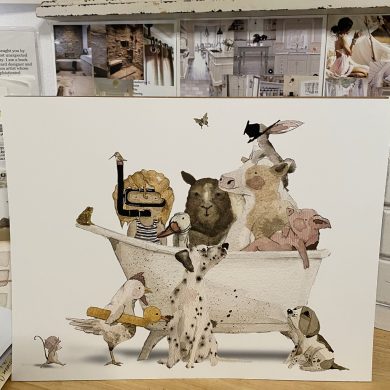
I’m the youngest of three girls from Boston, raised by a mother who taught me to hate myself…and I do a pretty good job of it. My dad owned Sealy Mattress of the North East. I was very close to my father and spent most weekends with him, making surprise sales calls at furniture stores and hanging out in the factory. I like to think my dad is responsible for my entrepreneurial spirit and business acumen.
It looks like you’re out of free articles.
Become a Women Create member to read this full article.
Already a member? Sign in

Monthly Membership
- Unlimited access to the Women Create website
- Monthly Maker Moments livestreams, members-only newsletters and more

Annual Memberships
- Unlimited access to the Women Create website
- Print and digital subscriptions of WHAT Women Create magazine, WHERE Women Create magazine, or both
- Monthly Maker Moments livestreams, members-only newsletters and more







